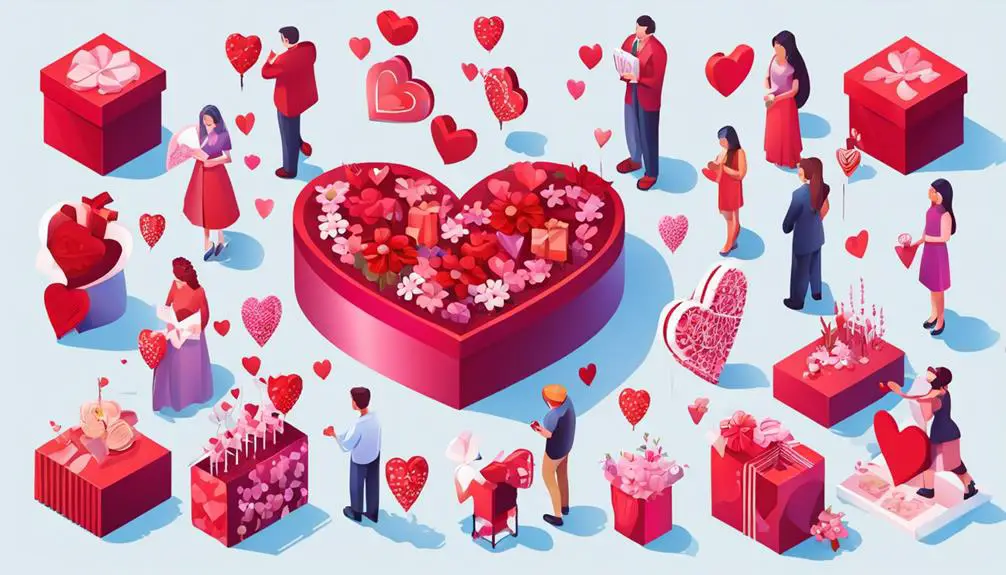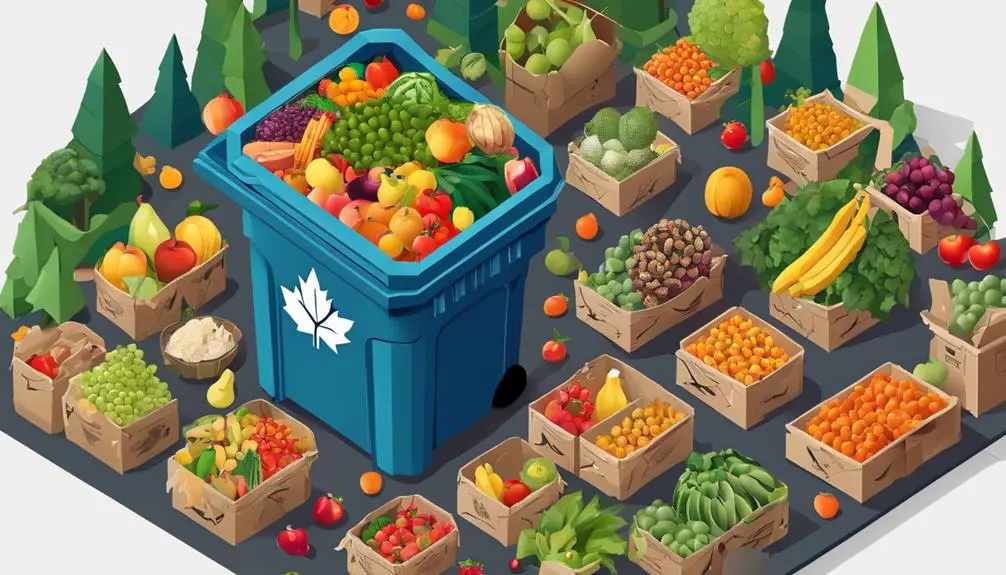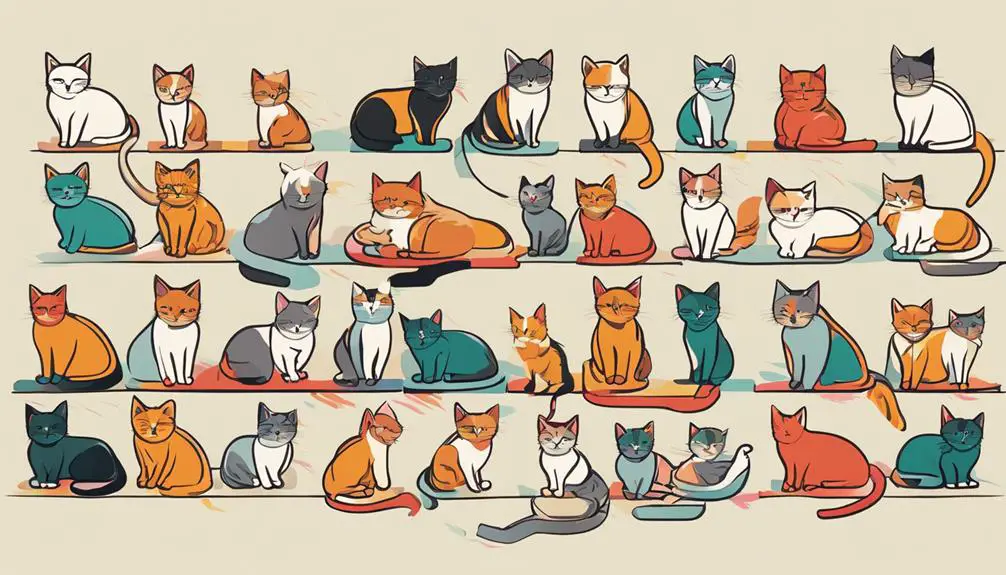Valentine's Day, a holiday steeped in tradition and sentiment, offers a fascinating glimpse into modern-day expressions of love and affection. From the staggering amount consumers shell out on this occasion to the sheer number of engagements that take place, the statistics surrounding Valentine's Day present a captivating narrative.
As we delve into the data, a deeper understanding of the economic and emotional impact of this day emerges, shedding light on the customs and trends that define this romantic holiday.
Key Takeaways
- Americans spend $26 billion on Valentine's Day gifts annually.
- Over 145 million Valentine's Day cards are exchanged each year.
- Approximately 6 million people get engaged on Valentine's Day yearly.
- Men tend to outspend women on Valentine's Day gifts.
Total Amount Spent on Valentine's Day
In 2023, Americans collectively spent a substantial $26 billion on gifts for Valentine's Day, with an average individual expenditure of approximately $193. This significant amount reflects the importance individuals place on expressing their love and appreciation for their partners, family, and friends during this romantic holiday. Jewelry and special evenings out were among the top choices for gifts, indicating a preference for memorable experiences and lasting tokens of affection.
Valentine's Day holds a prominent position in the retail industry, with businesses eagerly anticipating the surge in consumer spending that accompanies the holiday. The exchange of gifts is a longstanding tradition associated with Valentine's Day, symbolizing thoughtfulness and care towards loved ones. The $26 billion spent nationwide underscores the economic impact of this holiday, as people seek to create meaningful connections and strengthen relationships through the act of gift-giving. The statistics highlight the enduring appeal of Valentine's Day as a time for celebrating love and fostering emotional connections.
Number of Valentine's Day Cards Exchanged
Exchanging over 145 million Valentine's Day cards annually in the United States signifies a deeply ingrained tradition of heartfelt communication and affectionate gestures. This annual exchange makes Valentine's Day the second largest card-sending holiday in the country, following closely behind Christmas.
The custom of giving Valentine's Day cards has a rich history, dating back to the 15th century. Americans invest billions in purchasing these tokens of love and friendship each year, emphasizing the significance of this tradition in modern society.
Esther Howland holds the distinction of popularizing Valentine's Day cards in the United States, contributing to the growth and commercialization of the practice. The act of exchanging cards on Valentine's Day transcends mere paper and ink; it symbolizes the expression of emotions and the strengthening of relationships, making it a cherished tradition that continues to thrive in contemporary culture.
Popular Gifts Purchased on Valentine's Day
Popular gifts purchased on Valentine's Day offer insight into consumer preferences and trends during this romantic holiday. From traditional choices like jewelry and flowers to experiences like special evenings out, Americans spend billions on expressing their love.
Understanding the top-selling items and gift trends provides valuable data on the most sought-after presents for Valentine's Day.
Common Valentine's Day Gifts
Valentine's Day is marked by a significant trend in the purchase of jewelry, flowers, and dining experiences as popular gifts among celebrants. Americans allocate over $5.5 billion towards jewelry for Valentine's Day, indicating the high value placed on this timeless gift choice.
Additionally, nearly $4.4 billion is spent on romantic dinners and special dining experiences, emphasizing the importance of shared moments and culinary delights on this occasion. Interestingly, men tend to outspend women almost twofold when it comes to Valentine's Day gifts, showcasing their commitment to expressing love through extravagant gestures.
Retailers capitalize on this tradition by heavily promoting sales for jewelry and luxury items during the Valentine's Day season, catering to the demand for these common and cherished gifts.
Top-Selling Items
As Valentine's Day approaches, consumers eagerly seek out the top-selling items that capture the essence of affection and appreciation on this special occasion. Chocolates stand out as one of the most popular gifts, with over 36 million heart-shaped boxes sold annually.
Jewelry also holds a significant place in the list of top-selling items, with Americans splurging over $5.5 billion on jewelry purchases for Valentine's Day.
Flowers, particularly roses, remain a classic choice, with nearly 250 million roses cultivated each year for this romantic celebration.
Additionally, many opt for a special evening out, contributing to the almost $4.4 billion spent on romantic dinners and activities. Gift cards are also favored, offering recipients the freedom to choose their desired present.
Gift Trends and Data
Men's expenditures on Valentine's Day gifts reflect a notable inclination towards high-value purchases, with jewelry, flowers, chocolates, gift cards, and clothing ranking among the most sought-after items.
- Jewelry
- Flowers
- Chocolates
- Clothing
These items are popular choices among gift-givers looking to impress their significant others on Valentine's Day. Americans alone spend over $5.5 billion on jewelry for this occasion, showcasing the importance of gift-giving during this romantic celebration.
Additionally, treating loved ones to a special evening out, which includes activities like dinner and outings, accounts for nearly $4.4 billion in spending, emphasizing the significance of experiences as part of the gift-giving tradition on Valentine's Day.
Top Valentine's Day Flowers
Red roses stand out as the predominant choice among the array of popular Valentine's Day flowers, embodying sentiments of love and passion. Alongside red roses, other popular choices include tulips, lilies, and orchids, each carrying its own unique message.
Pink roses, for instance, symbolize admiration and gratitude, making them a thoughtful option for Valentine's Day gifting. White roses, on the other hand, represent purity and innocence, offering a delicate and elegant choice for the holiday.
For those looking to convey a variety of emotions or meanings, mixed bouquets featuring different flowers are a versatile option. These mixed arrangements allow for personalization and creativity in expressing sentiments on Valentine's Day. Whether it's the classic red rose or a carefully curated bouquet, flowers continue to be a timeless and cherished gift on this romantic occasion.
Statistics on Valentine's Day Proposals
Valentine's Day is not only a day of love but also a popular occasion for proposals. Understanding proposal success rates and popular proposal locations can provide insight into modern relationship dynamics and romantic gestures on this special day.
Exploring these statistics can shed light on the trends and preferences of couples during this sentimental time.
Proposal Success Rates
With approximately 6 million people getting engaged on Valentine's Day annually, the success rate of proposals on this romantic occasion is notably high. Many factors contribute to the elevated success rates, including the sentimental atmosphere and the significance of the date for couples. Here are some interesting insights into the success rates of Valentine's Day proposals:
- Studies suggest that the success rate of proposals on Valentine's Day is higher than on other days.
- The romantic and emotional ambiance of Valentine's Day often leads to positive responses.
- Couples who choose Valentine's Day for their proposal may have already discussed and planned for this moment, increasing the likelihood of a positive outcome.
- The symbolic nature of proposing on Valentine's Day can enhance the chances of a successful proposal.
Popular Proposal Locations
Considering the allure of romance and picturesque settings, the choice of proposal location plays a pivotal role in the success and memorability of Valentine's Day engagements. Among the top 5 popular proposal locations on Valentine's Day are Paris, New York City, Venice, London, and the Eiffel Tower.
Approximately 6 million couples choose Valentine's Day to get engaged each year, with the most common proposal time falling between 6 pm and midnight. Locations such as restaurants, parks, beaches, and scenic overlooks are favored spots for Valentine's Day proposals.
It is worth noting that Valentine's Day ranks as the second most popular day for proposals, following closely behind Christmas Day. These iconic locations and romantic settings add an extra touch of magic to the special moment of proposal on this day.
Impact of Valentine's Day on Retail
The commercial impact of Valentine's Day on the retail sector is significant, driving sales across various industries such as chocolates, flowers, and jewelry. This romantic occasion prompts a surge in consumer spending as individuals seek the perfect gifts to express their love and affection. Here are four key ways in which Valentine's Day influences retail:
- Boost in Sales: Industries like chocolates, flowers, and jewelry experience a considerable increase in sales as people purchase gifts for their partners.
- Restaurant Reservations: Restaurants witness a rise in reservations and revenue during the Valentine's Day period as couples opt for romantic dining experiences.
- E-commerce Growth: Online shopping for gifts and experiences sees a notable surge, contributing to the overall growth of e-commerce during this time.
- Special Promotions: Retailers capitalize on the occasion by offering seasonal discounts and special promotions to attract Valentine's Day shoppers, further stimulating consumer spending.
Trends in Valentine's Day Celebrations
Emerging patterns in Valentine's Day observances provide insights into evolving consumer behaviors and preferences during this romantic holiday. Around 52% of consumers partake in Valentine's Day celebrations annually, with 45% of Americans considering a significant trip as part of their plans. Men tend to be the primary big spenders when it comes to Valentine's Day gifts, reflecting a traditional trend in gift-giving. Interestingly, 35% of consumers prefer online shopping for Valentine's Day gifts, indicating a shift towards digital platforms for convenience and variety.
Another notable trend is the sheer scale of floral arrangements during Valentine's Day, with approximately 224 million roses cultivated specifically for this occasion. This highlights the enduring popularity of flowers as a symbol of love and affection. These trends in Valentine's Day celebrations underscore the evolving nature of how individuals choose to express their love and appreciation on this special day, reflecting changes in shopping habits and romantic gestures.
Conclusion
In conclusion, Valentine's Day is a significant holiday with a long history of celebrating love and affection. Consumers spend a substantial amount on gifts and festivities, with millions of people exchanging cards and getting engaged on this day.
The impact of Valentine's Day on retail is substantial, with popular gifts including flowers, jewelry, and romantic dinners. Trends in celebrations continue to evolve, showcasing the enduring importance of this holiday in relationships and love.








